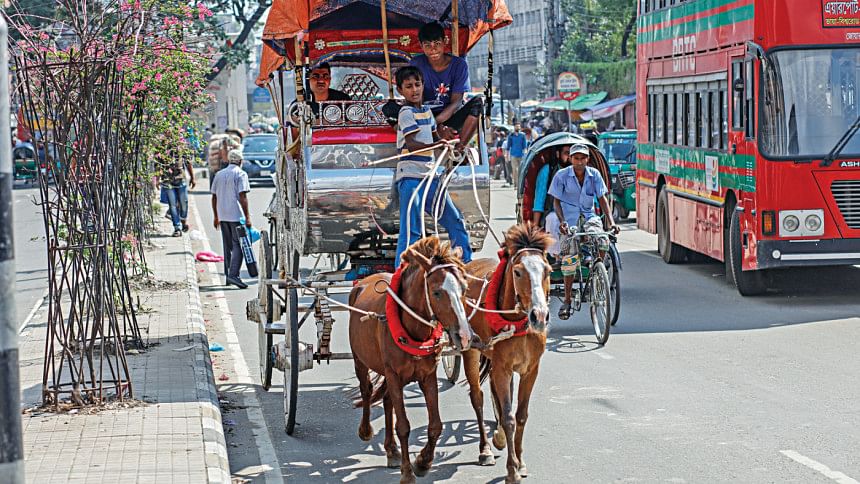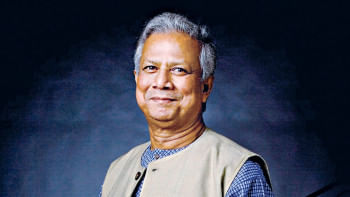The decline of tomtoms: Old Dhaka’s historic carriages fade into history

The centuries-old charm of Old Dhaka's horse-drawn carriages, locally known as "tomtoms", is gradually disappearing. These carriages have been part of the city's streets for nearly 200 years, but are slowly fading away with time.
At one point, there were 35 to 40 horse-drawn carriages operating in areas such as Bangabazar, Fire Service Hospital, Bakshibazar, Narinda, Siddiq Bazar, and Keraniganj. On the Sadarghat to Gulistan route alone, 33 carriages were in operation. However, with the advent of modern vehicles such as buses, microbuses, and rickshaws, these iconic carriages are on the brink of extinction.
Babu, the owner of a horse-drawn carriage in Bangabazar, said, "A few years ago, we had 40 carriages, but due to the rising costs of kheil [bran], gram [chickpeas], and grains, we have been forced to reduce the number of carriages. We are struggling to pay the salaries of the operators and employees."
He explained that many owners have had to abandon the trade because it is no longer financially viable.
In the past, locals used horse-drawn carriages for various grand events -- including weddings, gaye holud ceremonies, religious processions, movie shoots, and election campaigns. Brides would often travel in these carriages to the groom's house instead of using a palanquin.

Today, however, the demand for tomtoms has significantly declined, although they are still sought-after for special occasions like weddings during the Boishakh season and other festive events.
Horse-drawn carriages were first popularised in our city by an Armenian businessman named Shircore. His company, G M Shircore and Sons, commercialised horse-drawn carriages as a mode of transportation around the mid-nineteenth century. References to Dhaka's carriages were documented in the Calcutta Review in 1844.
On the business side, a tomtom earns between Tk 1,500 and Tk 2,000 per day, while the coachman typically earns Tk 400 to Tk 500. However, the costs associated with maintaining these are high, including feeding the horse (hay, husk) and buying stainless steel horseshoes to protect its hooves.
Despite their charm, cruelty towards horses is also increasing. Each tomtom carries 8 to 10 passengers, and the horses must navigate heavy loads and muddy roads. Horseshoes typically last only a day, and since replacing them daily is expensive -- one kilogramme of horseshoes costs Tk 500 to Tk 600 -- many owners delay replacements. This leaves horses in immense pain, unable to run properly, and subject to harsh treatment from the coachman's whip.
In today's era of mechanical advancements, horse-drawn carriages are outdated and inhumane. Despite the availability of alternative modes of transportation, the continued use of these carriages highlights a cruel reality. The suffering of these helpless animals, caused by economic pressures and outdated practices, serves as a reminder of the cost of preserving such traditions in a modern society.

 For all latest news, follow The Daily Star's Google News channel.
For all latest news, follow The Daily Star's Google News channel. 



Comments